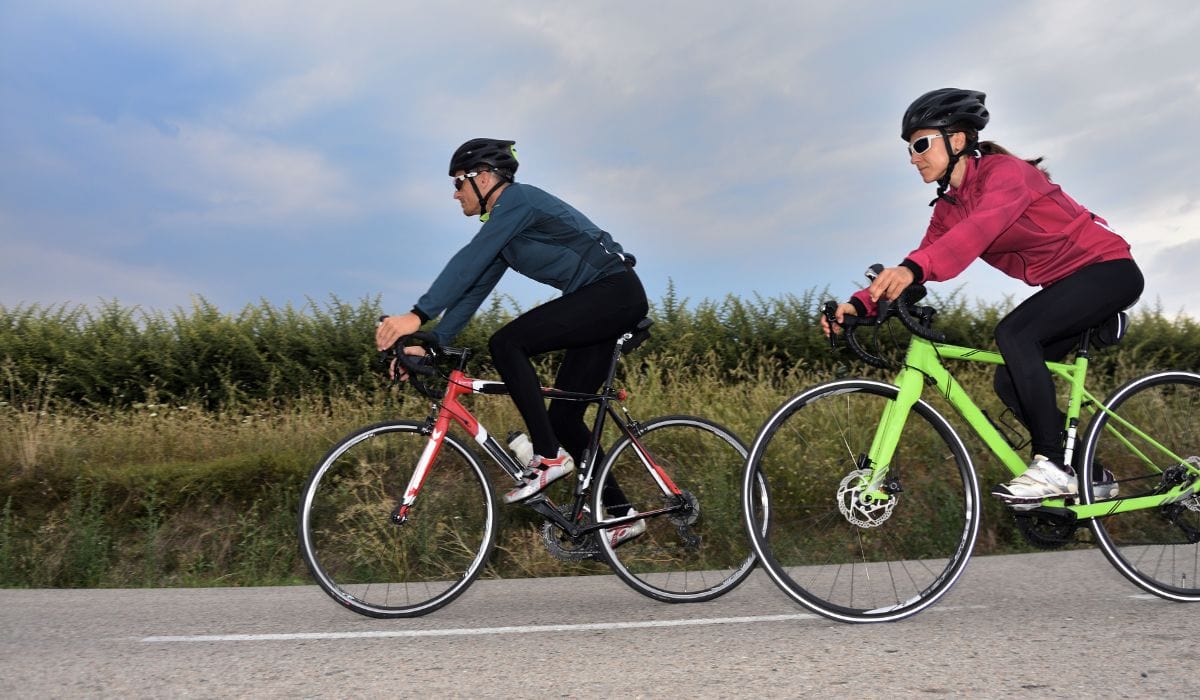
What is intermittent fasting?
Intermittent fasting is a buzzword in many weight loss communities; now, athletes are picking it up too. But what are the potential risks, side effects, and benefits for active individuals?
Whether you’re an avid runner, cycling enthusiast, or just starting your fitness adventure, here’s what you need to know about intermittent fasting, how to do it, and its effects on athletic performance.
What is intermittent fasting?
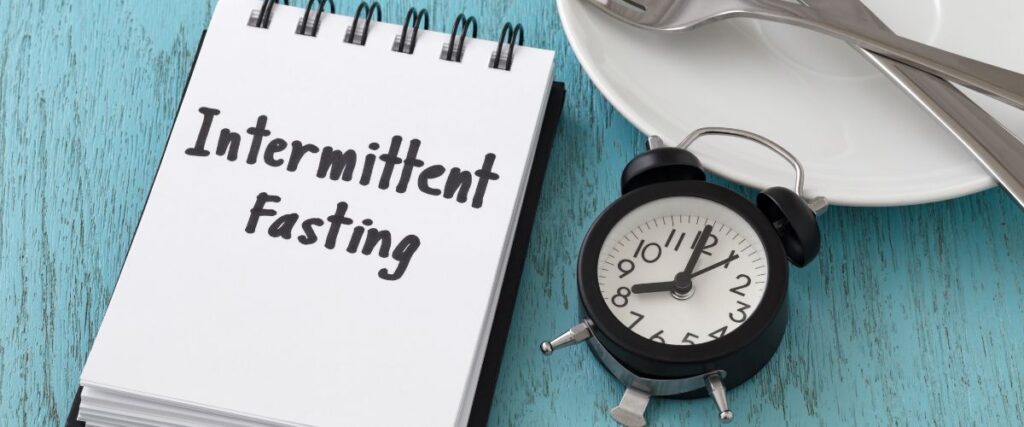
Intermittent fasting is a lifestyle involving regularly fasting for varying periods of time. When you’re not fasting, you can eat whatever you want.
Many people find intermittent fasting works well for them because they can choose how they want to do it. And studies show it’s an effective way to lose weight, with the average participant losing 7 to 11 pounds over 10 weeks.1
How does intermittent fasting work?
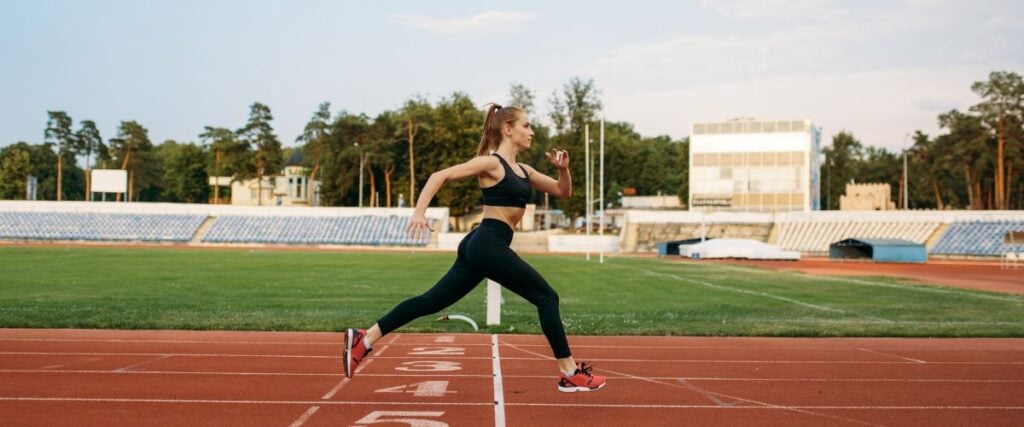
Intermittent fasting can work in several different ways. You can follow a fasting schedule that works best for you depending on your lifestyle, caloric needs, and dietary preferences.
Different types of intermittent fasting diets include:
- Alternate-day fasting: Fasting every other day of the week
- Modified alternate-day fasting: Reducing your calorie intake to about 25% of your usual intake every other day
- Periodic fasting: Limiting your caloric intake to about 500 calories per day on two non-consecutive days of the week
- Time-limited eating: Fasting during a set window, such as from 7 p.m. to 11 a.m.
What am I allowed to eat while on an intermittent fasting diet?
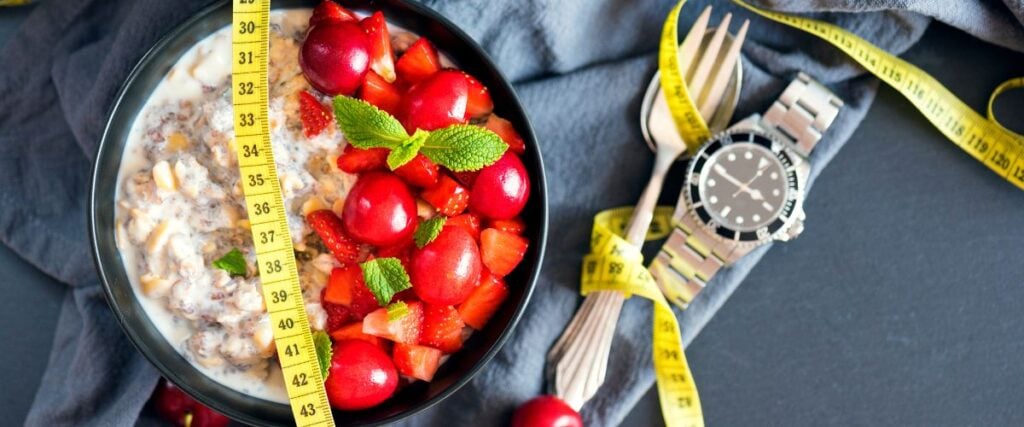
With intermittent fasting, the primary focus is on when you eat, not what you eat. That means on the days you’re not fasting, you can eat whatever you want. However, if your ultimate goal is to lose weight or shed fat, you’re more likely to reach your goals if you follow a well-balanced and nutritious diet at least 80% of the time.
To make sure you continue to feel your best, even on fasting days, make sure your diet consists of the following food groups:
- Vegetables
- Fruits
- Whole grains
- Lean protein
To keep things simple, consider whether you want to lose weight, reduce inflammation, improve your heart health, etc., and eat with that in mind. There are no strict limitations on what you can or can’t eat.
When fasting, the rule about what you can eat varies depending on the type of intermittent fasting schedule you follow. For example:
- If you follow a time-limited eating routine, you’d avoid all food during your fasting window and only have certain drinks, like water, unsweetened tea, and black coffee.
- If you follow an alternate-day fasting schedule, you’d typically eat about 500 calories on fasting days. Those calories should be from nutrient-dense foods instead of sugary, fatty, and high-calorie junk food.
How does intermittent fasting affect athletic performance?
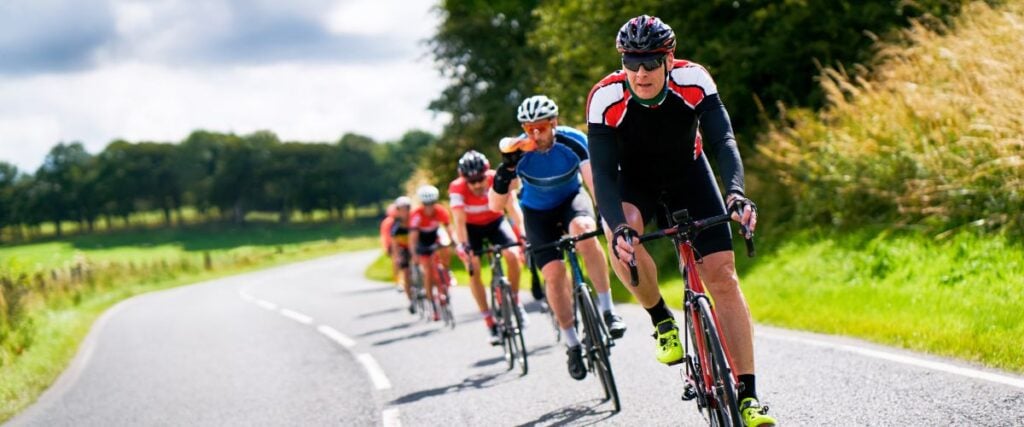
Now, let’s say you’re an avid Vingo user and log a decent number of miles on your exercise bike or treadmill daily. If performance matters to you, you’re probably wondering how introducing intermittent fasting to your lifestyle might affect your ability to cycle or run.
Generally speaking, intermittent fasting is okay for athletes or regularly active individuals, but you should be careful about when and how long you fast.
For instance, if you don’t eat before high-intensity exercises, like long-distance running, sprints, or intense cycling, your performance will likely suffer, and you probably won’t feel great.
Otherwise, it’s difficult to definitively say how intermittent fasting affects athletic performance because more research is needed. Overall, the current research is somewhat contradictory. Several different studies have produced the following results on intermittent fasting:
- It’s associated with decreased body fat and maintenance of lean muscle mass among athletes.2
- There was no impact on VO2 max when elite cyclists and middle to long-distance runners intermittently fasted.3,4,5
- Experienced runners also did not experience any change in their overall running time, heart rate, or perceived exertion while completing a 6.21-mile race.4
- Active adults who completed repeated sprints showed an overall decrease in speed after three days of intermittent fasting.6
- A group of active students reported decreased cycling power and reduced ability for quick bursts of energy after 10 days of intermittent fasting.7
In addition to the mixed research findings, some people recommend exercising caution when intermittent fasting as an athlete. Carbohydrates are essential for athletes since the body uses them as a primary energy source during training and competitions. However, since many people restrict their carb intake on fasting days to reduce their overall calorie intake, their athletic performance may suffer later.8
Are there any risks of intermittent fasting?

Before adopting an intermittent fasting plan, it’s also wise to consider the possible risks. Depending on the length of your fasting windows, some unwanted side effects may include:9
- Lethargy
- Headaches
- Crankiness
- Constipation
- Intense cravings or overeating on non-fasting days
- Nausea (if you take daily medication without food)
Is intermittent fasting right for me?

Intermittent fasting might be right for you, but you’ll need to consider several factors before deciding.
- Is your schedule compatible with intermittent fasting? If your fasting window doesn’t provide enough time to eat before you exercise or afterward, you may not be fueling your body correctly, which could lead to performance or health issues.
- What type of physical activity do you regularly do, and at what intensity? If you run or cycle regularly, you might find that intermittent fasting doesn’t supply enough energy to get through your workouts. In that case, it may not be a good fit for you.
- What’s your motivation for fasting? Depending on your goals, your reason for fasting may or may not be great for your mental health. For instance, intermittent fasting to reduce inflammation in your body might be more beneficial than adopting a fasting lifestyle to achieve what you believe is an ideal body image.
- Do you have a complicated history with disordered eating? Intermittent fasting might not be ideal for someone with a history of eating disorders, as it might contribute to unhealthy habits like overeating, compulsive exercise, vomiting, or excessive laxative use.10 Although intermittent fasting doesn’t necessarily cause these issues, it may increase some people’s risk of disordered eating.
Key Takeaways:
Intermittent fasting is a lifestyle involving regularly fasting for varying time periods. Research indicates its impact on physical activity like running or cycling is mixed, and it may not be an ideal lifestyle for all athletes. It’s important to consider your schedule, physical activities, motivation, and any history of disordered eating before committing to an intermittent fasting lifestyle.Sources:
- Diet Review: Intermittent Fasting for Weight Loss. (2022, May 17). The Nutrition Source. https://www.hsph.harvard.edu/nutritionsource/healthy-weight/diet-reviews/intermittent-fasting/
- Ashtary-Larky, D., Bagheri, R., Tinsley, G. M., Asbaghi, O., Gentil, P., & Moro, T. (2021). Effects of intermittent fasting combined with resistance training on body composition: a systematic review and meta‐analysis. Physiology & Behavior, 237, 113453. https://doi.org/10.1016/j.physbeh.2021.113453
- Moro, T., Tinsley, G. M., Longo, G. A., Grigoletto, D., Bianco, A., Ferraris, C., Guglielmetti, M., Veneto, A., Tagliabue, A., Marcolin, G., & Gentil, P. (2020). Time-restricted eating effects on performance, immune function, and body composition in elite cyclists: a randomized controlled trial. Journal of the International Society of Sports Nutrition, 17(1). https://doi.org/10.1186/s12970-020-00396-z
- Tovar, A. P., Richardson, C., Keim, N. L., Van Loan, M. D., Davis, B. J., & Casazza, G. A. (2021). Four Weeks of 16/8 Time Restrictive Feeding in Endurance Trained Male Runners Decreases Fat Mass, without Affecting Exercise Performance. Nutrients, 13(9), 2941. https://doi.org/10.3390/nu13092941
- Brady, A. J., Langton, H. M., Mulligan, M., & Egan, B. (2020). Effects of 8 wk of 16:8 Time-restricted Eating in Male Middle- and Long-Distance Runners. Medicine & Science in Sports & Exercise, 53(3), 633–642. https://doi.org/10.1249/mss.0000000000002488
- Cherif, A., Meeusen, R., Farooq, A., Ryu, J. H., Fenneni, M. A., Nikolovski, Z., Elshafie, S. S., Chamari, K., & Roelands, B. (2017). Three Days of Intermittent Fasting: Repeated-Sprint Performance Decreased by Vertical-Stiffness Impairment. International Journal of Sports Physiology and Performance, 12(3), 287–294. https://doi.org/10.1123/ijspp.2016-0125
- Naharudin, M. N., & Yusof, A. (2018). The effect of 10 days of intermittent fasting on Wingate anaerobic power and prolonged high-intensity time-to-exhaustion cycling performance. European Journal of Sport Science, 18(5), 667–676. https://doi.org/10.1080/17461391.2018.1438520
- Cholewa, J. M., Newmire, D. E., & Zanchi, N. E. (2019). Carbohydrate restriction: Friend or foe of resistance-based exercise performance? Nutrition, 60, 136–146. https://doi.org/10.1016/j.nut.2018.09.026
- Harvard Health. (2023, April 23). 4 intermittent fasting side effects to watch out for. https://www.health.harvard.edu/staying-healthy/4-intermittent-fasting-side-effects-to-watch-out-for
- Ganson, K. T., Cuccolo, K., Hallward, L., & Nagata, J. M. (2022). Intermittent fasting: Describing engagement and associations with eating disorder behaviors and psychopathology among Canadian adolescents and young adults. Eating Behaviors, 47, 101681. https://doi.org/10.1016/j.eatbeh.2022.101681








